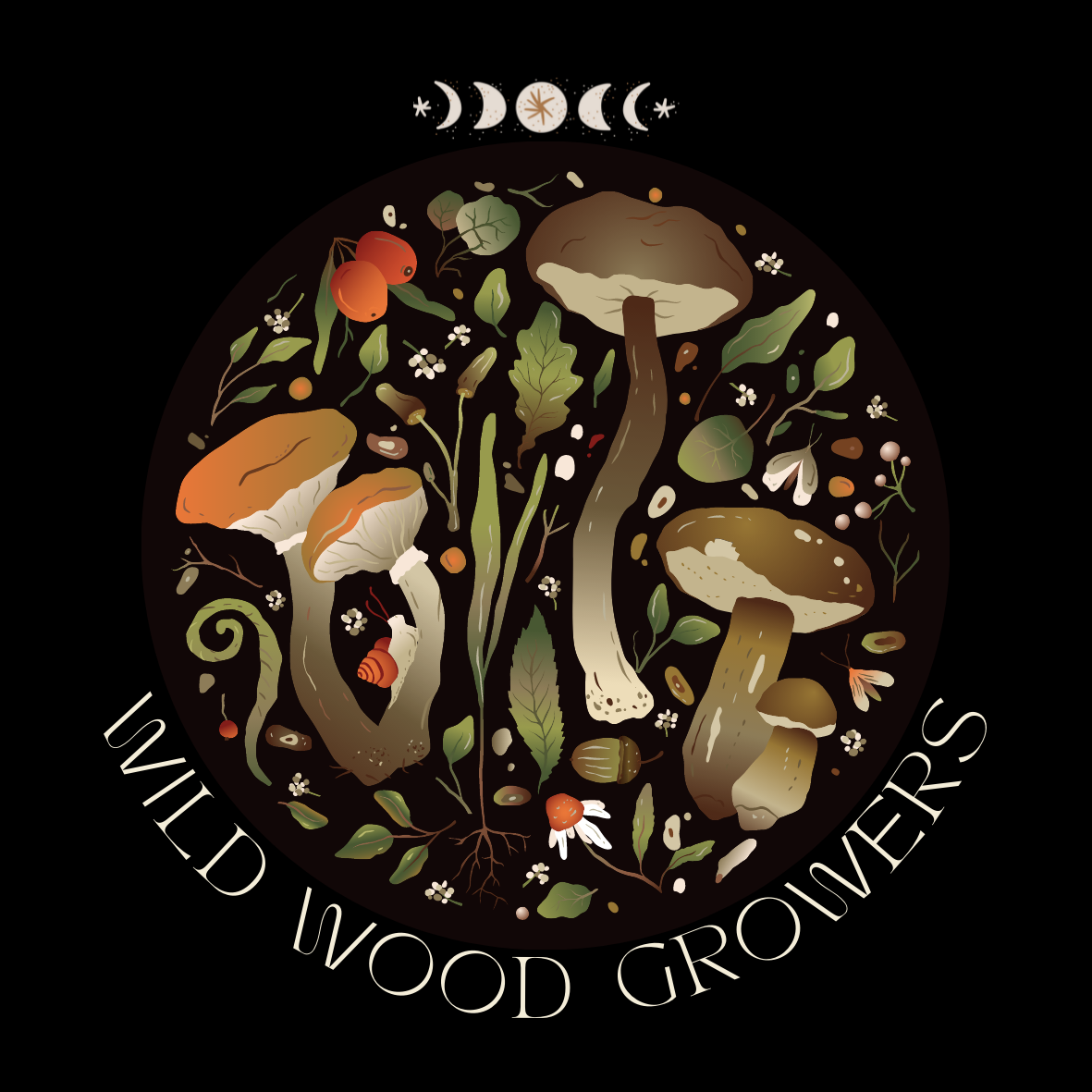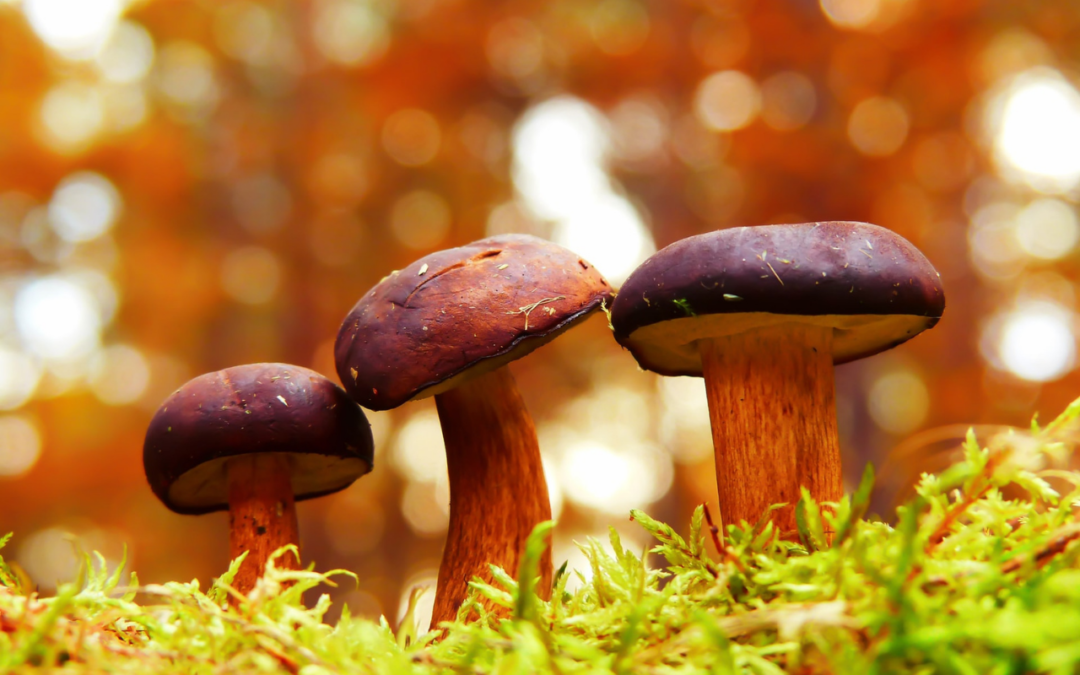Grow Mushrooms Outdoors in a Mushroom Bed
If you want to try your hand at growing some fresh mushrooms but don’t like the idea of doing it indoors, choosing to grow mushrooms outdoors is a good alternative. This article explains how to build your own mushroom bed outdoors. Growing mushrooms on logs is also a great way to add some fungi-filled fun into your garden. If you want more information about how to grow mushrooms on logs, you can read our guide here.
How To Create An Outdoor Mushroom Bed
The King Stropharia mushroom is a great choice for growing mushrooms outdoors. We’ll discuss how they’re grown, and what kind of conditions are best with this type of mushroom. It’s a lovely mushroom that grows really well on wood chip beds, so it’s excellent for beginners.
Decide Where To Set Up Your Bed
Your mushrooms need a designated place to grow. A raised garden bed is ideal but you can improvise and find a shaded patch in your garden or allotment and set this up as your new mushroom bed. Once you’ve decided where to set up your bed the first step is to line it with cardboard. This helps the bed retain moisture and prevents weeds from invading your bed.
Layer Your Bed With Wood Chips and Mushroom Spawn
To start building your mushroom bed, you’ll need to create the first layer of wood chips on top of the cardboard. You can use any type or size of shreds for this; just make sure they are all-natural and untreated woods. On top of your first layer of wood chips, start creating alternating layers of mushroom spawn and wood chips. Put down about half of your mushroom spawn on top of your first layer of wood chips. Add more layers of wood chip and spawn until you have 3 or 4 layers sandwiched on top of each other. The spawn will use the wood chips as food to help it to grow and colonise the wood chip bed.
Cover The Mushroom Bed In Straw
Now that your wood chip and spawn layers are complete, it’s time to cover the whole bed in straw. The straw acts as a mulch so that your bed retains moisture and prevents the bed underneath from drying out. This helps to hold rainwater and draw more moisture into the bed and this can also reduce the amount of watering you need to do manually to keep your bed moist. The straw acts as an insulation barrier during the colder months too.
Maintaining The Mushroom Bed In The First Weeks
Make sure your mushroom bed has enough water by giving it ample soaking with fresh water. It’s also important not to let the straw become too dry as this is often one of the reasons that a new mushroom bed doesn’t thrive because it lost too much moisture. The bed needs to have enough moisture so the mycelium underneath the wood chips can grow, feed, and eventually produce mushrooms.
Maintaining Your Mushroom Bed
Now your mushroom bed is complete. From here on in, soak the bed with water at least once a week. Obviously, if it’s raining, as it often is here in the UK, you won’t need to do this as frequently. Just keep an eye on your bed and water as often as you feel is needed. After a couple of months, you can dig into the bed to see how things are looking under the mulch layer. At this stage, you could already expect to see significant signs of life. You should be able to see white filaments of life growing through the entire bed. That’s the mycelium of the spawn eating its way through the wood chips and straw layers of the bed. You should expect to see mushrooms starting to fruit after around 6 months.
Harvesting Your Mushrooms
Time to harvest the fruits of your labour! It’s key to harvest your mushrooms before the caps become too large and over-mature. This is when caps start to disintegrate quite rapidly and become much more prone to infestation from parasites and pests. If you get them at just the right time, these mushrooms are absolutely delicious! You can cook them up and enjoy them the same way you would many other types of cultivated mushrooms. Please do be sure to correctly identify that the mushrooms you’re harvesting are the right variety that you intended to grow. As you have less control over the growing conditions when growing outdoors it gives an opportunity for unexpected or rogue varieties to pop up in a mushroom bed. It’s unlikely to be anything harmful but it’s always better to be safe than sorry! If you’re growing King Stropharia mushrooms, they should have distinct red caps that are difficult to confuse with most other types of mushrooms that are commonly found in a wood chip mushroom bed so this helps to feel confident about what you are harvesting.
Annual Feeding
To keep a mushroom bed like this in good health requires little maintenance. You just need to feed it with a fresh new layer of wood chips every year to replenish the bed for the mycelium to thrive. Pour enough wood chips on to cover the entire bed, and then rake the bed so that the fresh wood chips are mixed in with the established mycelium. If you follow these steps you should continue to get mushrooms for years to come. Will you grow mushrooms outdoors? We’d love to hear your stories 🙂


Trackbacks/Pingbacks